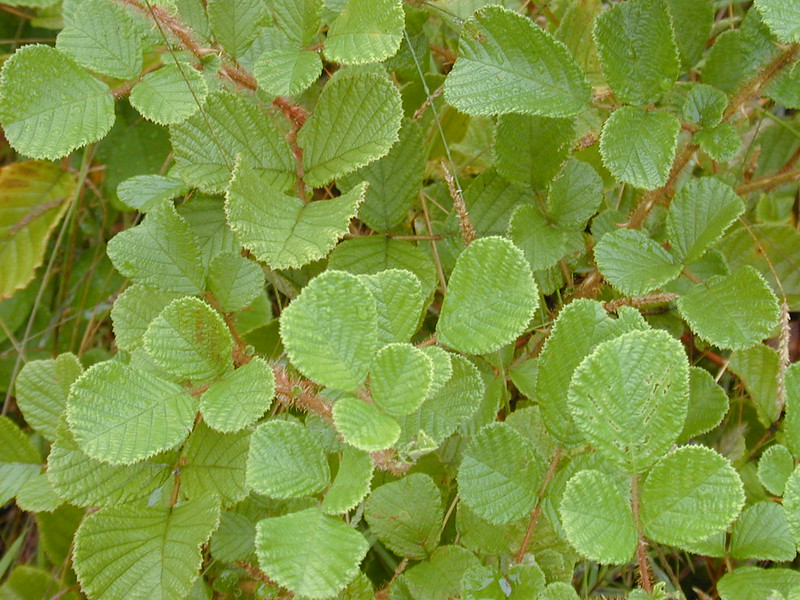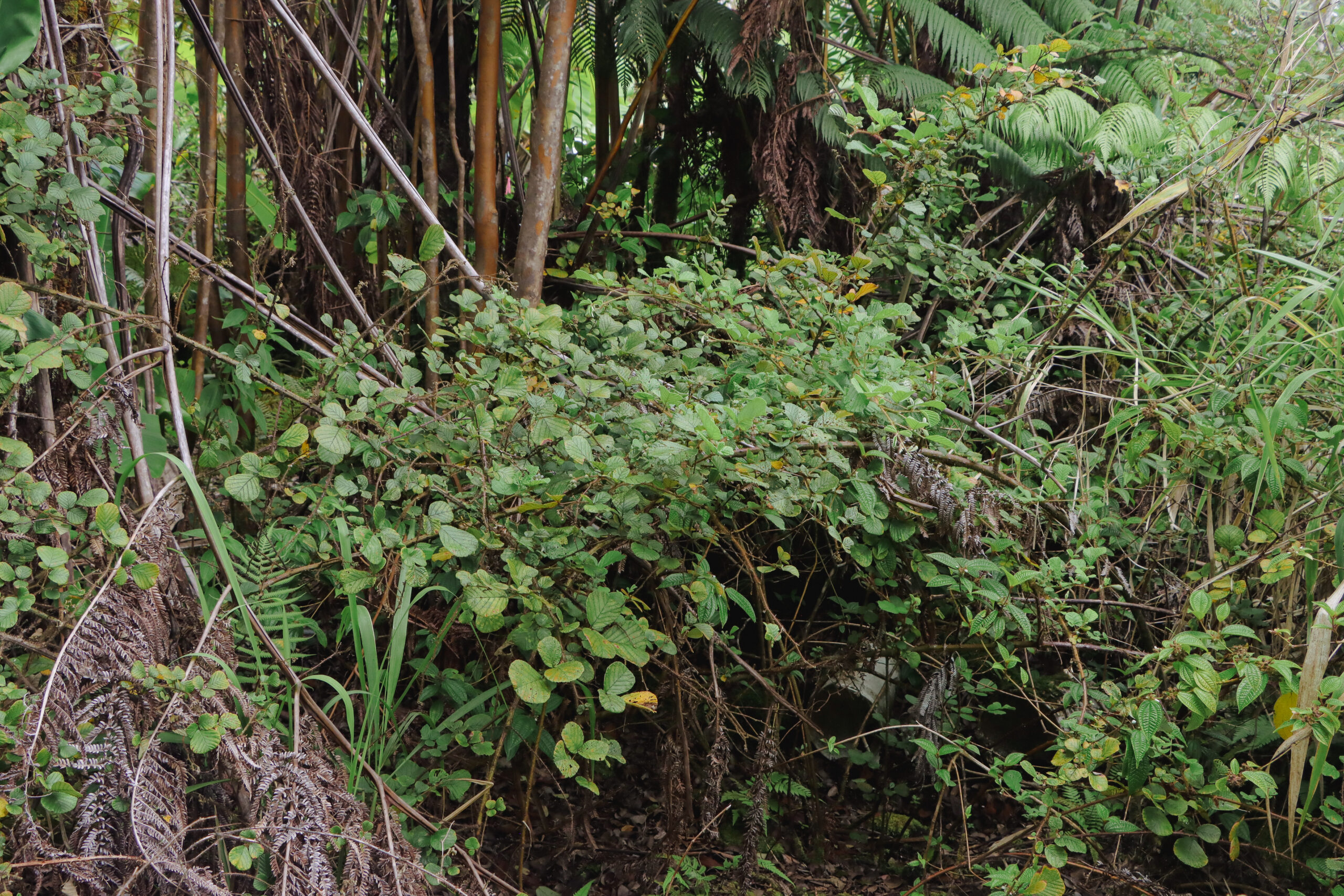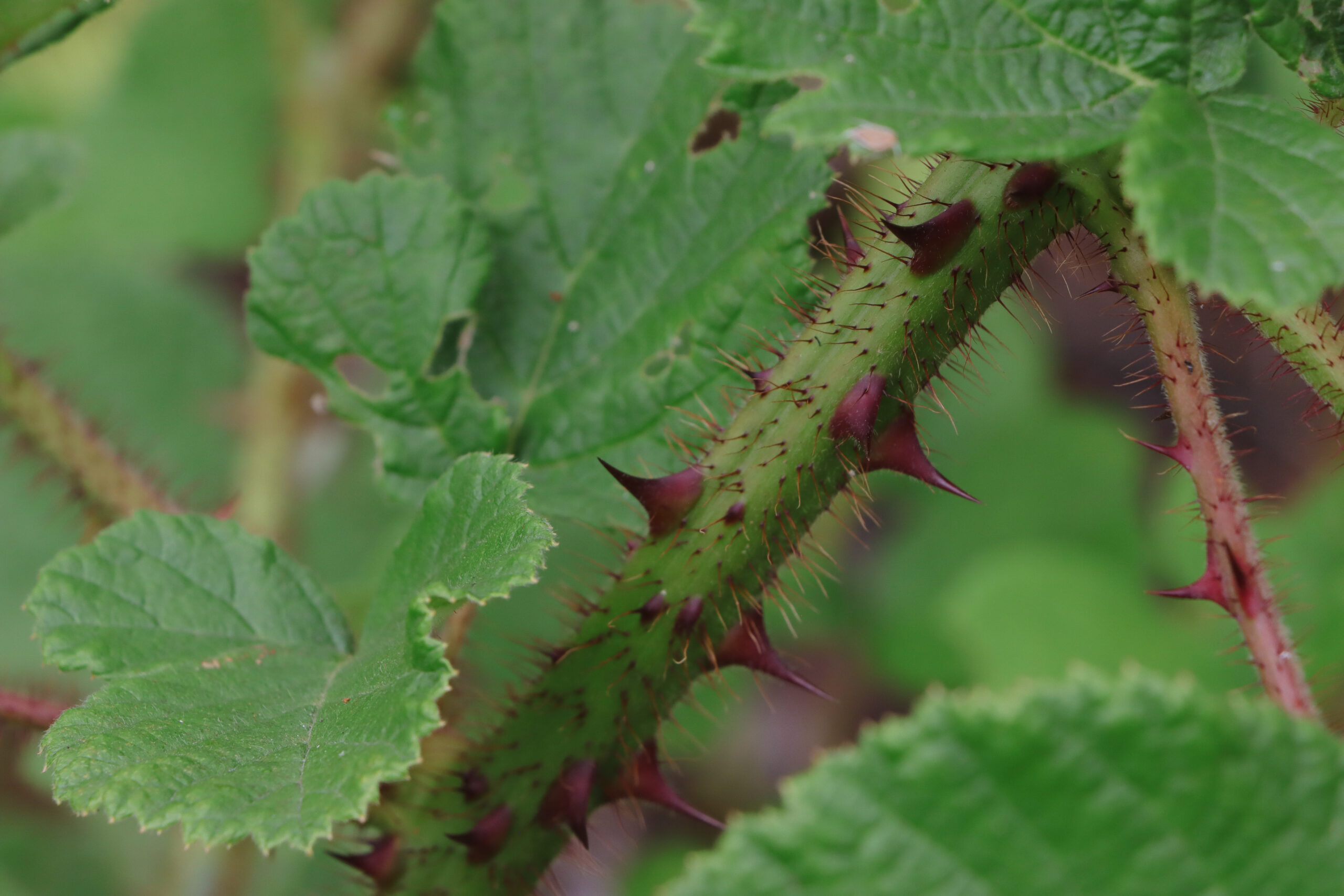
Himalayan Raspberry
Rubus ellipticus, or Himalayan raspberry, is a thorny invasive shrub native to the Indian subcontinent and parts of Southeast Asia. It was originally brought to tropical regions as an ornamental plant, but quickly escaped cultivation and spread into natural areas. In Hawaiʻi, it can be found in wet forests and pastures, especially in the Volcano and Laupāhoehoe regions. The shrub produces vigorous stems that set seed in their first year, then flower and fruit in the second, with clusters of bright yellow-orange berries. These traits, along with its dense thickets of sharp thorns, make it a difficult plant to manage once established.
Himalayan raspberry is particularly aggressive in disturbed lands, where it outcompetes native plants and forms impenetrable thickets. It spreads both by underground runners and by seeds, which are easily dispersed when birds eat its fruit. This dual strategy allows it to spread rapidly across landscapes, threatening Hawaiʻi’s native ecosystems and creating challenges for landowners and ranchers. Because of its impacts, it is listed as a noxious weed in Hawaiʻi.
Impacts:
- Forms dense thickets that block light and outcompete native plants
- Tolerates deep shade and grows into the forest midstory
- Yellow fruit is dispersed by pigs and frugivorous birds
- Anywhere the cane touches the ground, a new plant can root and spread
- Sharp and numerous thorns pose a physical risk to people and animals
Description:
- Grows up to 15 feet tall
- Leaves are trifoliate with elliptical leaflets that are green above and silvery-white underneath
- Stems are covered with small, sharp prickles
- Produces yellow-orange aggregate fruits
- Often found between 2,200 – 5,500 feet elevation in wet and mesic forests
Himalayan Raspberry (Rubus ellipticus)


Photos: BIISC
Controlling Himalayan Raspberry:
Physical control: This invasive species can be managed through physical removal, but it requires persistence. Plants should be cut back to just a few inches from the ground to expose the canes. Because this species resprouts from underground roots, follow-up is critical—monitor sites regularly and repeat cutting as needed. Protective gear such as heavy-duty gloves and cutting tools are essential, since the dense thickets and sharp thorns make clearing difficult. Some communities, like Fern Forest, even organize tool-sharing programs to support landowners tackling infestations.
Chemical control: Herbicides should only be applied when the weather is clear, ideally for a few hours before and after treatment. Cut back the primary canes to about 1–2 inches above the ground and immediately spray—just enough to coat the cane without dripping. Runners and resprouts may need separate treatment. Because the plant can take up to a year to die completely, monitor the site and retreat as necessary. Always follow label instructions, wear protective gear, and take care to protect the surrounding environment.
- Application method: cut-stump application
- Effective herbicides:
- Brush Killer Plus Concentrate (Triclopyr ester 8.8%) – label
- Triclopyr 4 (for agriculture use only) – label. Mix at a 30% dilution with forest crop oil.
